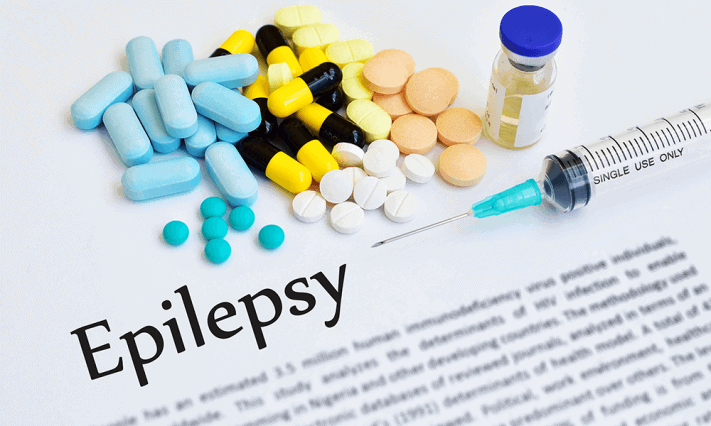What Are Anticonvulsant Medications And How Do They Prevent Seizures?

Anticonvulsant medications play a crucial role in the treatment and prevention of seizures. These medications are widely used in the management of epilepsy and other conditions characterized by recurrent seizures. Understanding the mechanisms by which anticonvulsant medications prevent seizures is of utmost importance in optimizing treatment outcomes.
This article aims to explore the various types of anticonvulsant medications, their mechanisms of action, effectiveness in controlling seizures, side effects and risks, dosage and administration guidelines, as well as monitoring and evaluating treatment. Additionally, alternative and adjunctive treatments will be discussed, along with future developments and ongoing research in the field.
By providing a comprehensive overview of anticonvulsant medications, this article aims to enhance understanding and facilitate informed decision-making regarding the use of these medications in the management of seizures.
Key Takeaways
- Anticonvulsant medications are crucial in treating and preventing seizures, and are widely used in managing epilepsy and other conditions with recurrent seizures.
- These medications work through various mechanisms of action, including sodium channel blockers, GABA enhancers, calcium channel blockers, glutamate receptor antagonists, and carbonic anhydrase inhibitors.
- They modulate electrical activity in the brain, stabilize neuronal membrane, and target molecular targets involved in regulating neuronal excitability.
- Anticonvulsant medications are effective in reducing the frequency and severity of partial seizures, controlling generalized seizures, managing absence and myoclonic seizures, and stabilizing neuronal membrane by modulating ion channels and neurotransmitters.
Types of Anticonvulsant Medications
There are several types of anticonvulsant medications available, each with their own mechanisms of action and effectiveness in preventing seizures.
One type of anticonvulsant medication is sodium channel blockers, which work by blocking the voltage-gated sodium channels in the brain, thereby preventing the spread of abnormal electrical activity.
Another type is GABA enhancers, which enhance the inhibitory effects of gamma-aminobutyric acid (GABA), a neurotransmitter that helps to reduce neuronal excitability.
Additionally, there are calcium channel blockers that inhibit calcium influx into neurons, reducing their excitability.
Other anticonvulsant medications include glutamate receptor antagonists, which block the actions of the excitatory neurotransmitter glutamate, and carbonic anhydrase inhibitors, which regulate pH levels in the brain.
Dosage and administration of anticonvulsant medications vary depending on the specific drug, patient characteristics, and the type and frequency of seizures being treated.
Mechanism of Action
One mechanism by which anticonvulsant medications act is by modulating the electrical activity in the brain, thereby reducing the likelihood of abnormal electrical discharges that can lead to convulsive seizures. These medications are an essential component of epilepsy treatment and play a crucial role in seizure management.
Anticonvulsants work by targeting various molecular targets involved in the regulation of neuronal excitability, such as voltage-gated ion channels and neurotransmitter receptors. By modulating these targets, anticonvulsants help stabilize the neuronal membrane and inhibit the spread of abnormal electrical activity. This prevents the initiation and propagation of seizures, ultimately preventing convulsive episodes.
Additionally, anticonvulsant medications may also have other mechanisms of action, such as enhancing inhibitory neurotransmission or modulating synaptic plasticity. Overall, the mechanism of action of anticonvulsant medications is complex and multifaceted, contributing to their effectiveness in controlling seizures.
Effectiveness in Controlling Seizures
This paragraph will discuss the effectiveness of anticonvulsant medications in controlling different types of seizures.
Anticonvulsant medications have been shown to be effective in reducing the frequency and severity of partial seizures, which are characterized by abnormal electrical activity in a specific area of the brain.
These medications are also effective in controlling generalized seizures, which involve widespread electrical activity in the brain and can cause loss of consciousness.
Additionally, anticonvulsant medications have been found to be effective in managing absence seizures, which are characterized by brief periods of staring and loss of awareness, as well as myoclonic seizures, which involve sudden, brief muscle jerks.
Partial Seizures
Partial seizures, which involve abnormal electrical activity in a specific area of the brain, can be effectively managed through the use of anticonvulsant medications. These medications work by targeting the underlying mechanisms of seizure activity and reducing the frequency and intensity of partial seizures.
Here are four ways in which anticonvulsant medications can prevent partial seizures:
- Stabilizing the neuronal membrane: Anticonvulsant medications can enhance the inhibitory effects of neurotransmitters such as gamma-aminobutyric acid (GABA), reducing the excitability of neurons and preventing the spread of abnormal electrical activity.
- Modulating ion channels: Certain anticonvulsant medications can target ion channels involved in the generation and propagation of seizures, regulating their activity and preventing excessive neuronal firing.
- Inhibiting excitatory neurotransmission: Some anticonvulsant medications can block the action of excitatory neurotransmitters, such as glutamate, reducing the overall excitability of the brain and preventing partial seizures.
- Enhancing the effects of inhibitory neurotransmitters: Anticonvulsant medications can increase the availability or effectiveness of inhibitory neurotransmitters like GABA, increasing their inhibitory effects on neurons and dampening abnormal electrical activity.
Overall, anticonvulsant medications provide effective treatment options for managing partial seizures by targeting the underlying mechanisms of seizure activity and reducing their occurrence and severity.
Generalized Seizures
Generalized seizures, characterized by abnormal electrical activity throughout the entire brain, pose a significant challenge in terms of effective management and treatment. They differ from focal seizures, which are confined to a specific area of the brain.
Anticonvulsant medications play a crucial role in preventing and controlling generalized seizures. These medications work by targeting and regulating the abnormal electrical activity in the brain, thereby reducing the frequency and severity of seizures.
While anticonvulsant medications are effective in managing seizures, they can also have a significant impact on the quality of life for individuals with epilepsy. Adverse effects such as drowsiness, cognitive impairment, and mood changes are common, and finding the right medication and dosage can be a complex process.
However, the benefits of anticonvulsant medications in preventing seizures and improving overall seizure control outweigh the potential drawbacks for many individuals with epilepsy.
Absence Seizures
Absence seizures, also known as petit mal seizures, are a type of generalized seizure characterized by a sudden and temporary loss of consciousness, often accompanied by brief episodes of staring and repetitive movements. These seizures typically last for a few seconds to a minute and are commonly seen in children.
While anticonvulsant medications are the primary treatment for absence seizures, there are alternative treatments available as well. These may include lifestyle modifications such as getting enough sleep, managing stress, and avoiding triggers. In some cases, a ketogenic diet or biofeedback therapy may be considered as alternative treatments.
It is important to note that long-term effects of absence seizures can vary depending on the individual. Some individuals may outgrow these seizures as they get older, while others may continue to experience them into adulthood. Regular monitoring and follow-up with a healthcare professional is crucial to ensure appropriate management and minimize potential complications.
Myoclonic Seizures
Myoclonic seizures are characterized by sudden and brief muscle jerks or twitches, which can occur in various parts of the body. These seizures are often mistaken for muscle spasms or nervous tics. They can be caused by a variety of factors, including genetic disorders, brain injuries, or certain medications.
To manage myoclonic seizures, anticonvulsant medications are typically prescribed. These medications work by stabilizing the electrical activity in the brain and preventing the excessive firing of neurons that lead to seizures. However, some patients may not respond well to these medications or may experience intolerable side effects. In such cases, alternative therapies can be explored.
Clinical trials are currently being conducted to evaluate the effectiveness of alternative therapies for myoclonic seizures. These trials aim to identify new treatments or interventions that can provide better seizure control and improve the quality of life for individuals with this condition.
Side Effects and Risks
Adverse effects and potential risks accompany the use of anticonvulsant medications, highlighting the need for careful consideration and monitoring when prescribing these drugs. It is crucial to be aware of the long-term effects and drug interactions associated with anticonvulsants. Here are three important points to keep in mind:
- Long-term effects: Anticonvulsant medications may have potential long-term effects on cognitive function, bone health, and hormonal balance. Prolonged use of these drugs may lead to memory deficits, reduced bone density, and hormonal imbalances, which require regular monitoring and management.
- Drug interactions: Anticonvulsants can interact with other medications, including contraceptives, antidepressants, and anticoagulants. These interactions can alter the effectiveness of both the anticonvulsant and the other drugs, leading to potential side effects or reduced efficacy. Close monitoring and adjustments in dosages may be necessary to ensure optimal treatment outcomes.
- Individual variability: Each patient may respond differently to anticonvulsant medications, with variations in side effects and risks. Factors such as age, gender, underlying health conditions, and genetic predispositions can influence individual responses. Close collaboration between healthcare providers and patients is important to navigate potential risks and tailor treatment plans accordingly.
In conclusion, while anticonvulsant medications can effectively prevent seizures, it is crucial to consider the long-term effects, potential drug interactions, and individual variability to ensure optimal treatment outcomes and minimize risks.
Dosage and Administration
Moving on from the discussion of the side effects and risks associated with anticonvulsant medications, it is important to delve into the topic of dosage and administration. The efficacy of anticonvulsant medications relies heavily on appropriate dosage adjustment and careful administration. Each individual may require a specific dosage depending on their age, weight, and medical condition. It is crucial to find the right balance between providing effective seizure control and minimizing adverse effects. Additionally, drug interactions should be carefully considered when prescribing anticonvulsant medications. Certain medications, such as oral contraceptives or antidepressants, can interfere with the effectiveness of anticonvulsants. Therefore, healthcare providers must thoroughly evaluate a patient’s medical history and current medications to ensure the safe and effective use of anticonvulsant medications.
Markdown Table:
| Dosage and Administration |
|---|
| – Dosage adjustment based on individual factors |
| – Careful administration to balance seizure control and adverse effects |
| – Consideration of drug interactions with other medications |
Monitoring and Evaluating Treatment
To ensure the effectiveness of treatment, it is crucial to monitor and evaluate the progress of seizure control. Monitoring effectiveness involves assessing the frequency, duration, and intensity of seizures over time. This can be done through patient diaries, where individuals record the occurrence and characteristics of their seizures.
Additionally, healthcare providers may use electroencephalography (EEG) to measure brain activity and detect any abnormal electrical patterns associated with seizures.
Treatment evaluation involves assessing the overall impact of anticonvulsant medications on seizure control. This includes evaluating the reduction in seizure frequency and severity, as well as any adverse effects of the medication. Patient-reported outcomes, such as quality of life measures, can also be considered during treatment evaluation.
By monitoring and evaluating treatment, healthcare providers can adjust medication dosages or explore alternative treatment options to optimize seizure control and improve the overall well-being of individuals with epilepsy.
Alternative and Adjunctive Treatments
This discussion will focus on alternative and adjunctive treatments for seizures, including the ketogenic diet, vagus nerve stimulation, transcranial magnetic stimulation, and cannabidiol (CBD) oil.
The ketogenic diet is a high-fat, low-carbohydrate diet that has been shown to be effective in reducing seizures in some individuals with epilepsy.
Vagus nerve stimulation involves the implantation of a device that delivers electrical impulses to the vagus nerve, which can help reduce the frequency and severity of seizures.
Transcranial magnetic stimulation is a non-invasive procedure that uses magnetic fields to stimulate specific areas of the brain and has shown promise in reducing seizures.
Finally, cannabidiol (CBD) oil, a derivative of the cannabis plant, has been increasingly used as an adjunctive treatment for seizures, although further research is needed to fully understand its effectiveness and safety.
Ketogenic Diet
The efficacy of the ketogenic diet in reducing seizure frequency has been well-documented, presenting a promising alternative to anticonvulsant medications. This dietary therapy involves a high-fat, low-carbohydrate, and adequate-protein regimen.
Here are three key points to consider:
- Metabolic changes: The ketogenic diet induces a state of ketosis, where the body primarily relies on ketone bodies for energy production instead of glucose. This metabolic shift has been found to decrease neuronal excitability and stabilize brain activity, leading to a reduction in seizures.
- Mechanisms of action: The exact mechanisms through which the ketogenic diet exerts its anticonvulsant effects are not fully understood. However, it is believed to involve a combination of factors such as altered neurotransmitter release, increased GABAergic activity, and modulation of ion channels.
- Effectiveness: Studies have shown that the ketogenic diet can significantly decrease seizure frequency and improve seizure control in both children and adults with epilepsy. It has been particularly effective in certain types of epilepsy, such as Dravet syndrome and Lennox-Gastaut syndrome.
Overall, the ketogenic diet offers a viable and effective alternative to anticonvulsant medications, providing hope for individuals with epilepsy seeking non-pharmacological treatments.
Vagus Nerve Stimulation
Vagus Nerve Stimulation (VNS) therapy has emerged as a potential adjunctive treatment for individuals with epilepsy. It is a noninvasive neurostimulation technique that involves the use of a device implanted in the chest, which delivers electrical impulses to the vagus nerve.
The vagus nerve is a major cranial nerve that connects the brain to various organs in the body, including the heart and stomach. By stimulating the vagus nerve, VNS therapy aims to reduce the frequency and severity of seizures in individuals with epilepsy.
The exact mechanisms by which VNS therapy exerts its anticonvulsant effects are not fully understood. However, it is believed that the electrical impulses delivered to the vagus nerve modulate abnormal electrical activity in the brain, thereby preventing seizures.
VNS therapy has shown promising results in clinical trials and is considered a safe and well-tolerated treatment option for individuals with epilepsy.
Transcranial Magnetic Stimulation
Transcranial Magnetic Stimulation (TMS) is a noninvasive neurostimulation technique that involves the use of magnetic fields to stimulate specific regions of the brain. It is considered a non-pharmacological treatment option for various neurological and psychiatric conditions, including epilepsy.
TMS works by generating a magnetic field that induces electrical currents in the brain, thereby modulating neuronal activity. This modulation is believed to disrupt abnormal brain activity associated with seizures and promote a more balanced and stable neuronal network.
TMS can be applied to different areas of the brain, depending on the specific condition being treated. Research has shown promising results in using TMS as an adjunctive therapy for individuals with drug-resistant epilepsy, with some studies reporting a reduction in seizure frequency and improved seizure control.
However, further research is still needed to better understand the mechanisms underlying TMS and its long-term efficacy in preventing seizures.
Cannabidiol (CBD) Oil
Transcranial Magnetic Stimulation (TMS) has shown promise as a potential treatment for various neurological disorders, including epilepsy. However, another alternative therapy gaining attention is Cannabidiol (CBD) oil. CBD oil is derived from the cannabis plant and is known for its potential therapeutic benefits. It has been reported to possess anticonvulsant properties, making it a potential option for individuals with epilepsy.
CBD oil is believed to interact with the endocannabinoid system in the body, which plays a crucial role in regulating various physiological functions, including seizure activity. This interaction may help reduce the frequency and severity of seizures.
However, it is important to note that the legality of CBD oil varies from country to country and within different regions of the same country. While it is legal in some places, others have strict regulations regarding its use and distribution.
Future Developments and Research
Advancements in technology and research are continuously being made to explore new avenues and approaches in the field of anticonvulsant medications, aiming to improve their effectiveness and reduce side effects, ultimately leading to better management of seizures. Future treatments for seizures are being investigated through ongoing studies, with researchers focusing on developing novel compounds and delivery methods. One area of interest is the use of gene therapy, where genes are introduced into the body to produce therapeutic proteins that can regulate brain activity and prevent seizures. Another promising avenue is the use of nanotechnology, which involves the use of tiny particles to deliver anticonvulsant drugs directly to the brain, bypassing the blood-brain barrier and increasing their effectiveness. These advancements have the potential to revolutionize the field of anticonvulsant medications and provide new options for individuals living with epilepsy and other seizure disorders.
| Future Developments | Ongoing Studies |
|---|---|
| Gene therapy | Nanotechnology |
| Novel compounds | Delivery methods |
Frequently Asked Questions
Are anticonvulsant medications only used to treat seizures?
Anticonvulsant medications are commonly used to treat seizures, but they can also be utilized for other conditions such as bipolar disorder and neuropathic pain. These medications have potential side effects and varying effectiveness in different types of seizures.
Can anticonvulsant medications be used in children?
Anticonvulsant medications can be used in children for the treatment of seizures. However, their use in pediatric patients requires careful consideration of safety concerns due to potential side effects and interactions with other medications.
What are the long-term effects of taking anticonvulsant medications?
Long-term use of anticonvulsant medications may lead to various side effects, including cognitive impairments and mood disorders. However, the effectiveness of these medications in preventing seizures tends to remain stable over time.
Are there any natural alternatives to anticonvulsant medications?
Natural remedies for epilepsy, including herbal alternatives to anticonvulsant medications, are often sought as alternative treatment options. However, there is limited scientific evidence to support their effectiveness in preventing seizures. Further research is needed to validate their safety and efficacy.
Can anticonvulsant medications interact with other medications?
Interactions with anticonvulsant medications can occur when they are taken concurrently with other medications. These interactions may lead to adverse effects, including increased or decreased effectiveness of both medications and potential drug toxicity.







